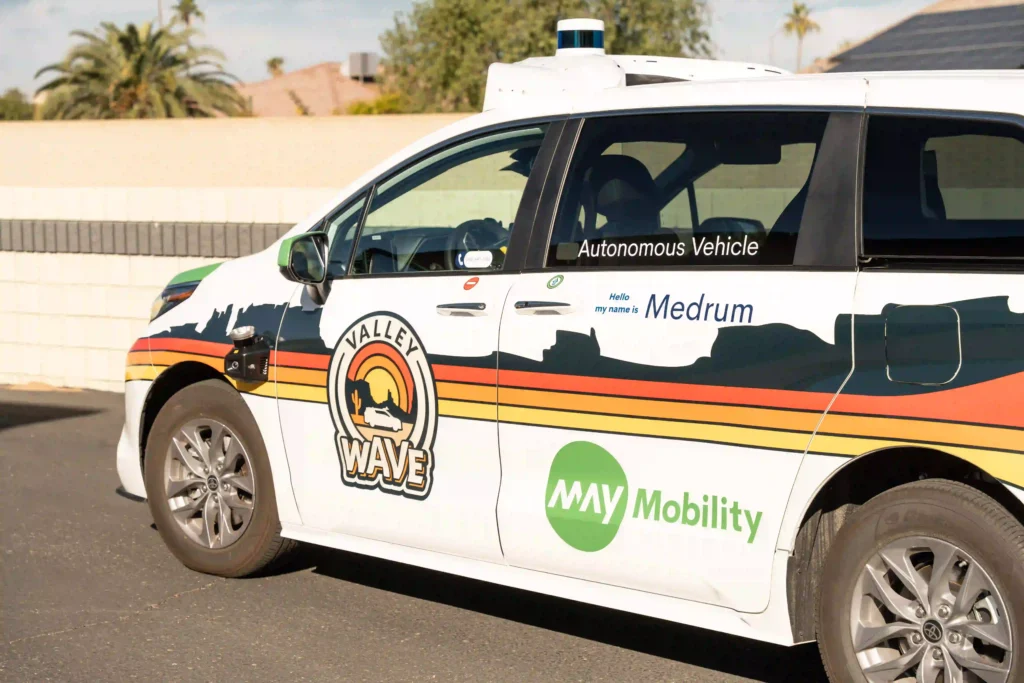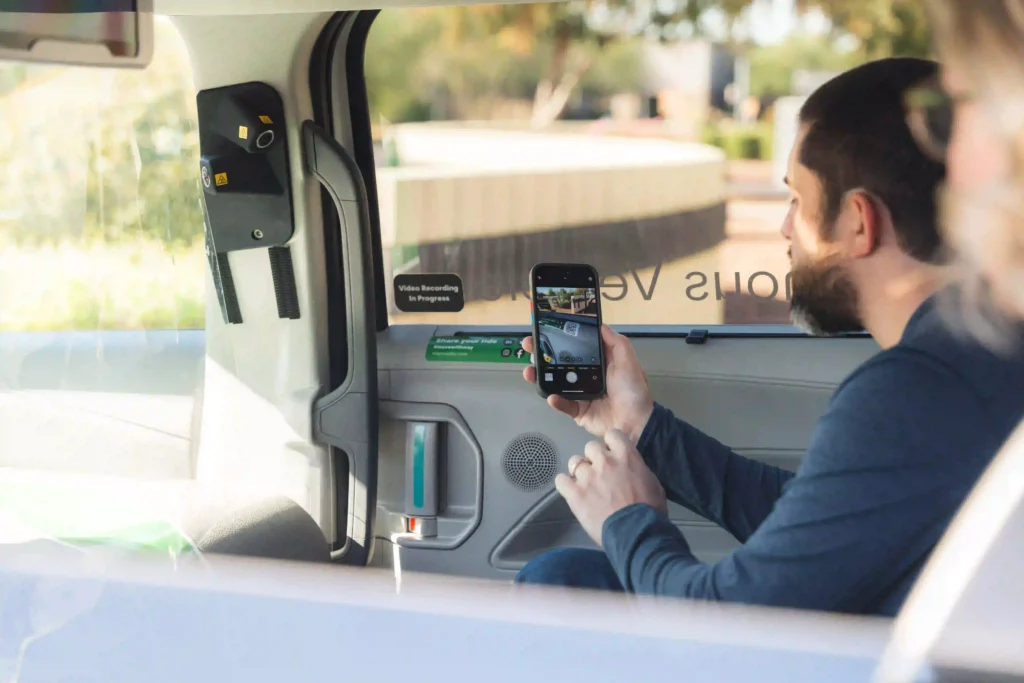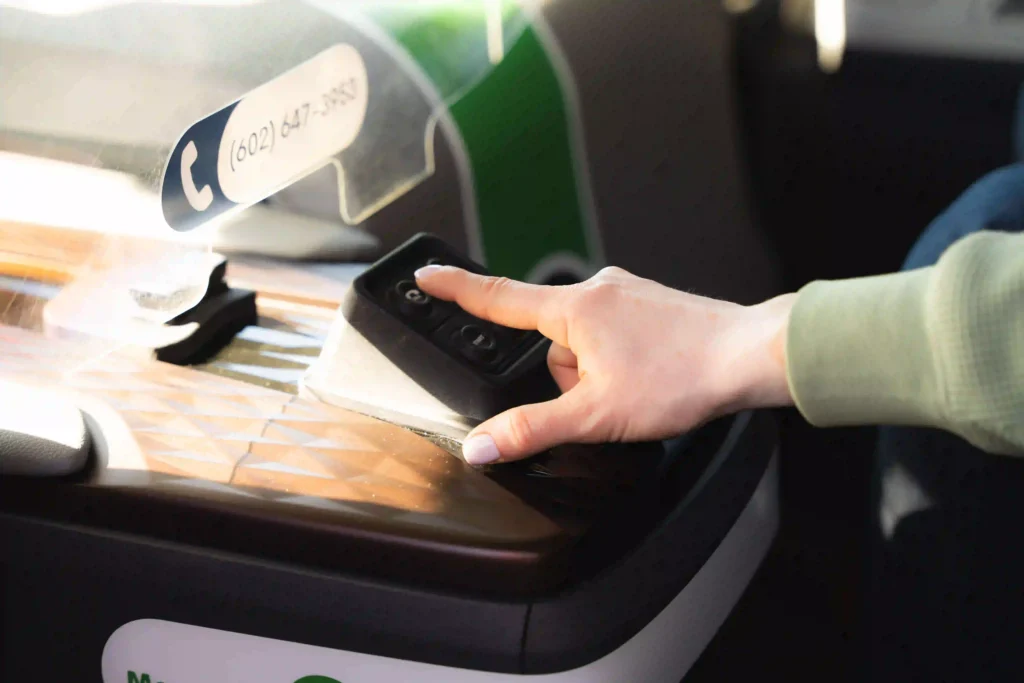
Listen to this Article
This is a story about how technology, driven by empathy, changes lives and with it, autonomy and dignity are being restored to those who need it most.
For millions of people living with disabilities, transportation is more than just a means to get from point A to point B. It’s a gateway to freedom, inclusion and independence. May Mobility understands this and is redefining the very essence of movement, ensuring that no one is left behind.
When May Mobility rolled onto the scene in 2017 headquartered in Ann Arbor, Michigan, they were rooted in the belief that transportation should be accessible to all, regardless of physical abilities. And they have more than delivered. By integrating their autonomous vehicle technology with thoughtful, community-centric approaches, May Mobility is proving that technology can be compassionate.

Simply, this is about cars that drive themselves but it is, more importantly, about the people who ride in them—people with mobility impairments, visual challenges and a variety of other disabilities. They’re the heroes of this narrative and May Mobility is the quiet hand lifting them to a higher level of independence.
What makes May Mobility’s autonomous vehicles so special? It starts with the platform: the Toyota Sienna. Now, this isn’t your standard minivan. The vehicles are spacious, accessible and human-centered. With the ability to safely load and transport wheelchair users, May Mobility ensures that everyone, regardless of their mobility challenges, can access their communities. In Detroit alone, half of the Accessibili-D fleet is designed specifically for wheelchair users. That’s no small feat in an industry often focused more on futuristic bells and whistles than practical needs.

But what if you’re visually impaired? May Mobility has thought of that too. The company’s in-vehicle experience, supported by real-time feedback via both audio and visual displays, ensures that every rider is informed and at ease throughout the journey. And here’s the kicker: there’s always a real person behind the scenes. In each wheelchair-accessible vehicle, you’ll find an Autonomous Vehicle Operator (AVO). These trained operators don’t just monitor the technology, they’re there to lend a hand—whether it’s assisting with boarding, providing additional guidance, or just making sure everyone feels safe and supported. It’s tech with a heart!
It’s one thing to create an autonomous vehicle. It’s another thing entirely to create one that learns, adapts, and evolves. May Mobility’s vehicles are powered by their patented Multi-Policy Decision-Making (MPDM) system, which is as sophisticated as it sounds. Here’s a vehicle that can visualize and assess thousands of scenarios per second, making decisions based on what’s safest for its passengers. And it doesn’t stop there. The MPDM system is constantly learning from new situations, allowing the vehicles to better handle unusual scenarios—whether it’s a surprise parade blocking the road or an impromptu construction site popping up. This means that May Mobility’s cars get smarter and safer with every trip, turning them into true partners in transportation.

One might assume that cutting-edge technology like this comes with a hefty price tag, especially for users with disabilities. But May Mobility isn’t just innovative in their tech, they’re revolutionary in their business model. In Detroit, for instance, rides are free, fully subsidized by the city. For the people who need these services the most, this makes autonomous transportation not just a luxury but a vital part of daily life.
And while the pricing may vary from city to city, the core philosophy remains: accessibility shouldn’t come at a premium. Whether through subsidies, partnerships with cities, or creative funding models, May Mobility is committed to making autonomous rides affordable for everyone.
In rural areas, where traditional public transportation is often sparse or nonexistent, May Mobility is making a groundbreaking impact by bringing autonomous micro transit solutions to places like Grand Rapids, Minnesota. Unlike the urban environments where autonomous vehicles typically operate, these rural deployments address unique challenges like vast distances, fewer transportation options and a high reliance on personal vehicles. May Mobility’s fleet provides accessible, on-demand transportation to people who might otherwise struggle to get around, especially wheelchair users, who make up nearly 8 % of the ridership in some rural areas like Grand Rapids. By connecting these communities to essential services and daily destinations, May Mobility is helping to close the transportation gap and ensuring that even the most remote populations have access to the freedom and independence that reliable transit offers.
What’s next for May Mobility? Well, they’re not slowing down. The company recently announced expansions, adding more routes and more vehicles to meet the growing demand. The future holds even more exciting advancements in their technology and services. But what’s truly exciting is that they are not only filling transportation gaps—May Mobility is actively contributing to the creation of accessible, inclusive cities. It goes beyond the technology or the vehicles. People with disabilities can navigate their cities with the same freedom as anyone else. For too long, they were passengers in their own lives, waiting for systems to catch up with their needs. With May Mobility, they’re finally in the driver’s seat—guiding us all into a future where no one is left behind. The future of transportation is here, and it’s rolling forward with everyone on board.

ABOUT MAY MOBILITY: May Mobility is an autonomous driving (AD) technology company redefining the future of autonomous mobility-as-a-service (MaaS). Leveraging its patented Multi-Policy Decision Making (MPDM) system, May Mobility built an industry-leading in-situ AI solution, which integrates real-time data every 200 milliseconds to ensure safety and efficiency, even in unpredictable situations. This revolutionary technology pairs live, online learning with traditional offline training, enabling rapid global deployment at half the cost and one-third of the time. Operating fleets of on-demand shared ride vehicles across the U.S. and Japan, May Mobility delivers safer, more efficient transportation across diverse environments, including rural cities, dense urban areas and challenging weather conditions. Backed by strategic partnerships with industry leaders, including Toyota Motor Corporation and NTT, May Mobility is disrupting the autonomous vehicle industry with one of the most practical vehicle offerings available. The company has completed over 400,000 autonomy-enabled rides across 15 deployments worldwide. For more information, visit www.maymobility.com
